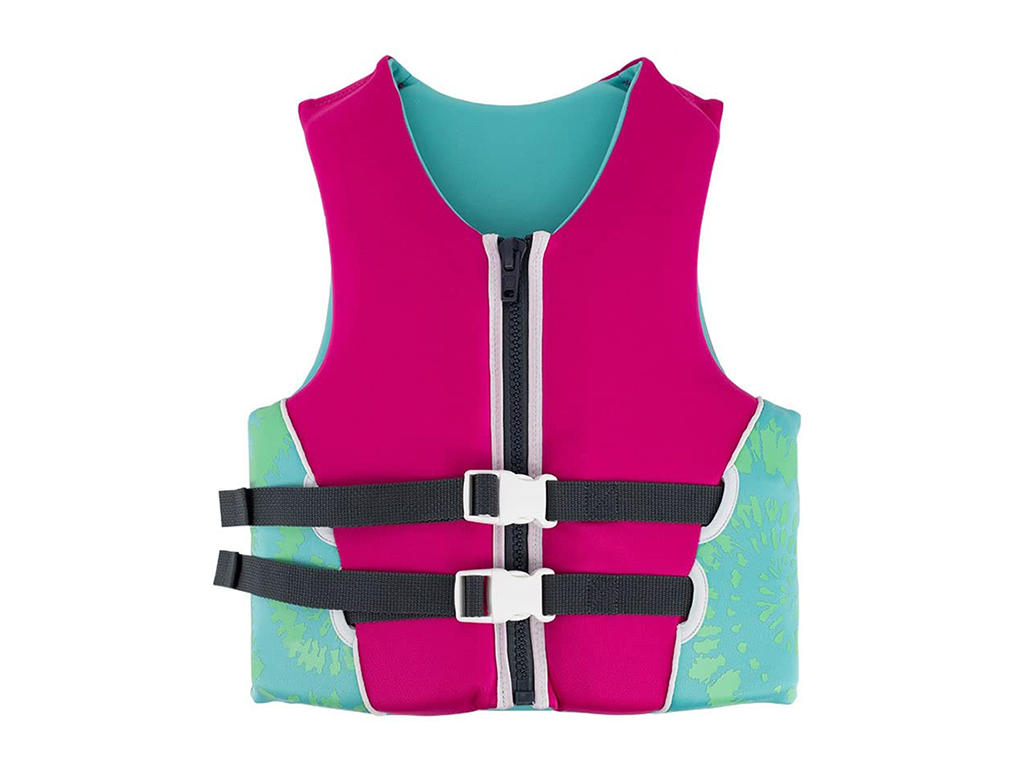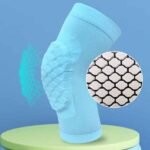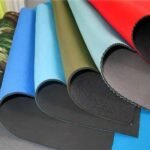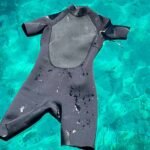Have you ever found your neoprene life jacket looking dingy or smelling unpleasant after a long day on the water? Properly cleaning your life jacket[1] is essential to maintain its functionality and extend its lifespan. Neglecting this can lead to reduced buoyancy, material degradation, and an overall unpleasant experience during your adventures.
Cleaning neoprene life jackets regularly ensures they remain in top condition, providing reliable buoyancy and comfort during your water activities.
I remember the first time I neglected to clean my neoprene life jacket after a weekend of kayaking. By the end of the trip, not only did it smell bad, but the neoprene felt stiff and uncomfortable. This experience taught me the importance of proper maintenance for my gear.
Let’s explore the best practices for cleaning neoprene life jackets to keep them fresh, functional, and long-lasting.
What Are Neoprene Life Jackets and Why Do They Need Proper Cleaning?
What exactly are neoprene life jackets, and why is proper cleaning important? Neoprene life jackets are buoyant garments made from neoprene, a synthetic rubber material known for its flexibility and insulation properties. They are designed to keep you afloat and warm in water, making them essential for various water activities.
Proper cleaning of neoprene life jackets is crucial to maintain their buoyancy, flexibility, and overall performance, ensuring your safety and comfort on the water.
During a winter fishing trip, I noticed that my neoprene life jacket became stiff and less buoyant after not cleaning it properly. This made me realize how important regular maintenance is for safety and longevity.
Dive Deeper: Importance of Regular Cleaning for Neoprene Life Jackets
Maintaining Buoyancy and Flexibility
Regular cleaning helps preserve the buoyant properties of neoprene. Dirt and grime can clog the pores of the neoprene, reducing its ability to trap air and provide buoyancy. Additionally, cleaning prevents the material from becoming stiff, ensuring that the life jacket remains flexible and comfortable.
Preventing Odors and Bacterial Growth
Moisture trapped in neoprene can lead to unpleasant odors and bacterial growth. Proper cleaning removes sweat, salt, and other residues, preventing mold and mildew from developing. This not only keeps your life jacket smelling fresh but also ensures a hygienic and safe experience.
Extending the Lifespan of the Life Jacket
Neoprene is a durable material, but it can degrade over time if not properly maintained. Regular cleaning removes abrasive particles and contaminants that can wear down the material, extending the lifespan of your life jacket and protecting your investment.
| Benefit | Description |
|---|---|
| Buoyancy Maintenance | Preserves the life jacket’s ability to keep you afloat |
| Flexibility | Keeps the material soft and comfortable to wear |
| Odor Prevention | Eliminates smells and inhibits bacterial growth |
| Longevity | Extends the overall lifespan of the life jacket |
Understanding these aspects highlights why proper cleaning is essential for neoprene life jackets, ensuring they remain effective and reliable.
Can Life Jackets Be Machine Washed?
Is it safe to machine wash neoprene life jackets, or should you stick to hand washing? While some neoprene life jackets are labeled as machine washable, it is generally recommended to hand wash them to avoid potential damage. Machine washing can be too harsh and may degrade the neoprene material over time.
While machine washing is possible for some neoprene life jackets, hand washing is typically safer and helps preserve the material’s integrity and functionality.
After a boating trip, I attempted to machine wash my neoprene life jacket. Unfortunately, the machine’s agitation made the neoprene feel rough and less flexible. Switching to hand washing restored its softness and effectiveness.
Dive Deeper: Hand Washing vs. Machine Washing Neoprene Life Jackets
Hand Washing Benefits
Hand washing allows for gentle cleaning, reducing the risk of damaging the neoprene. You can control the temperature of the water and the amount of force applied, ensuring that the life jacket is cleaned thoroughly without compromising its structure.
Machine Washing Risks
Machine washing can cause excessive agitation, leading to material wear and tear. High temperatures and harsh detergents can also degrade the neoprene, diminishing its waterproof and insulating properties. Additionally, machine washing may cause seams to weaken, increasing the likelihood of water ingress.
When Machine Washing Might Be Acceptable
If your life jacket is explicitly labeled as machine washable, you can follow the manufacturer’s instructions carefully. Use a gentle cycle with cold water and mild detergent, and avoid using fabric softeners or bleach. However, even with these precautions, hand washing remains the preferred method.
| Washing Method | Pros | Cons |
|---|---|---|
| Hand Washing | Gentle on neoprene, preserves flexibility | More time-consuming |
| Machine Washing | Convenient, effective for some models | Risk of material damage, reduced lifespan |
Evaluating these factors can help you decide the best washing method for your neoprene life jacket, balancing convenience with care.
How to Clean Neoprene Life Jackets: Step-by-Step Guide
What is the best way to clean neoprene life jackets[2] to ensure they remain waterproof and functional? Cleaning neoprene life jackets involves a few simple steps: rinsing, gentle washing, thorough drying, and proper storage. Following these steps helps maintain the material’s integrity and performance.
A step-by-step guide to cleaning neoprene life jackets includes rinsing off debris, washing with mild soap, rinsing thoroughly, air drying, and storing properly to preserve waterproofing and functionality.
After a muddy river trek, I followed a detailed cleaning process that kept my neoprene life jacket in excellent condition, ready for the next adventure without any loss in performance.
Dive Deeper: Detailed Cleaning Process for Neoprene Life Jackets
Rinsing Off Debris
Start by rinsing your life jacket with fresh water to remove dirt, mud, and other debris. Use a hose or a bucket of water to gently wash away contaminants without scrubbing harshly, which can damage the neoprene.
Gentle Washing
Prepare a mild soap solution using a gentle detergent or specialized neoprene cleaner. Submerge the life jacket in the soapy water and gently agitate it to clean the surface. Avoid using bleach, fabric softeners, or harsh chemicals, as they can degrade the neoprene material.
Thorough Rinsing
After washing, rinse the life jacket thoroughly with clean water to remove all soap residues. Ensure that no detergent remains, as it can cause skin irritation and affect the neoprene’s waterproofing properties.
Air Drying
Allow the life jacket to air dry naturally in a well-ventilated area away from direct sunlight and heat sources. Hang it or lay it flat to prevent deformation and maintain its shape. Avoid using dryers or placing it near radiators, as excessive heat can damage the neoprene.
Proper Storage
Once dry, store your neoprene life jacket in a cool, dry place. Avoid folding or compressing it tightly, as this can create permanent creases and weaken the material over time. Hanging the life jacket or storing it flat helps preserve its flexibility and waterproofing.
Additional Tips for Maintenance
- Inspect Regularly: Check for any signs of wear or damage, such as cracks or tears, and repair them promptly.
- Use Neoprene Protectants: Applying a neoprene protectant can help maintain the material’s flexibility and waterproofing.
- Avoid Prolonged Exposure to Sunlight: UV rays can degrade neoprene, so store your life jacket away from direct sunlight when not in use.
| Cleaning Step | Best Practices |
|---|---|
| Rinsing | Remove dirt and debris with fresh water |
| Washing | Use mild soap, avoid harsh chemicals |
| Rinsing Thoroughly | Ensure all soap is removed |
| Drying | Air dry naturally, avoid heat sources |
| Storage | Store flat or hung in a cool, dry place |
| Maintenance | Regular inspections and apply protectants as needed |
Following this comprehensive cleaning guide ensures your neoprene life jacket [3]remains in optimal condition, providing reliable protection and buoyancy for your water activities.
What Common Mistakes Should Be Avoided When Cleaning Neoprene Life Jackets?
What are the common errors people make when cleaning neoprene life jackets, and how can you avoid them? Mistakes such as using harsh chemicals, machine washing, improper drying, and neglecting regular maintenance can damage the neoprene material and compromise the life jacket’s effectiveness.
Avoiding common cleaning mistakes like using harsh detergents, machine washing, and improper drying helps preserve the neoprene life jacket’s waterproofing and durability.
Once, I used a strong bleach solution to clean my neoprene life jacket, which caused the material to become brittle and lose its waterproof qualities. Learning from this, I adopted gentler cleaning methods to maintain my gear’s integrity.
Dive Deeper: Identifying and Preventing Cleaning Mistakes
Using Harsh Chemicals
Harsh chemicals like bleach, fabric softeners, and strong detergents can break down the neoprene material, reducing its flexibility and waterproofing. Always opt for mild soaps or specialized neoprene cleaners to ensure gentle yet effective cleaning.
Machine Washing
As mentioned earlier, machine washing can be too aggressive for neoprene. The agitation and heat can cause the material to wear out faster, leading to cracks and leaks. Stick to hand washing to extend the life of your life jacket.
Improper Drying Techniques
Drying your neoprene life jacket improperly can lead to deformation and loss of flexibility. Avoid direct sunlight and high heat sources. Instead, air dry your life jacket in a shaded, well-ventilated area to maintain its shape and integrity.
Neglecting Regular Maintenance
Skipping regular cleaning and inspections can allow dirt, mold, and minor damages to accumulate, affecting the life jacket’s performance. Establish a routine cleaning schedule to keep your neoprene life jacket in top condition.
Overlooking Storage Conditions
Storing your life jacket in a damp or confined space can promote mold growth and material degradation. Ensure proper storage by keeping it dry and well-ventilated to prevent moisture buildup and preserve the neoprene.
| Common Mistake | Why to Avoid | How to Prevent |
|---|---|---|
| Harsh Chemicals | Damage neoprene, reduce flexibility and waterproofing | Use mild soaps or neoprene cleaners |
| Machine Washing | Causes wear and tear, cracks, and leaks | Hand wash gently |
| Improper Drying | Deforms material, reduces flexibility | Air dry in shaded, ventilated areas |
| Neglecting Maintenance | Allows dirt and damage to accumulate | Clean regularly and inspect frequently |
| Poor Storage | Promotes mold growth and material degradation | Store in a dry, well-ventilated place |
By recognizing and avoiding these common mistakes, you can ensure that your neoprene life jacket remains effective and durable, providing reliable protection during your water activities.
How Often Should You Clean Neoprene Life Jackets?
How frequently should you clean your neoprene life jacket to keep it in optimal condition? The frequency of cleaning depends on how often you use the life jacket and the conditions in which it’s used. As a general guideline, clean your neoprene life jacket after each use or at least once a week if used frequently.
Regular cleaning, ideally after each use or weekly for frequent users, ensures that your neoprene life jacket remains waterproof, odor-free, and in good condition.[^6]
During the summer months when I go kayaking multiple times a week, I make it a point to rinse and air dry my neoprene life jacket after each trip. This routine helps prevent buildup of dirt and moisture, keeping the jacket fresh and functional.
Dive Deeper: Factors Influencing Cleaning Frequency
Usage Intensity
The more frequently you use your neoprene life jacket, the more often it needs to be cleaned. Daily use in saltwater environments requires more frequent cleaning compared to occasional use in freshwater settings.
Environmental Conditions
Life jackets used in harsh conditions, such as saltwater, muddy rivers, or polluted areas, accumulate more dirt and contaminants. These conditions necessitate more regular cleaning to maintain the jacket’s integrity and performance.
Storage Practices
Proper storage can reduce the frequency of cleaning. If you store your life jacket in a clean, dry place after each use, it stays fresher longer and requires less frequent deep cleaning.
Personal Hygiene
If your hands are dirty or you sweat a lot during use, your life jacket may require more frequent cleaning to prevent odors and bacterial growth.
Type of Activity
Different activities expose your life jacket to varying levels of dirt and wear. For example, fishing might involve handling bait and equipment that can dirty the jacket, while surfing may expose it to sand and saltwater.
| Factor | Influence on Cleaning Frequency |
|---|---|
| Usage Intensity | More frequent use increases need for cleaning |
| Environmental Conditions | Harsh conditions require more regular cleaning |
| Storage Practices | Proper storage reduces cleaning frequency |
| Personal Hygiene | Dirty hands and sweating necessitate more cleaning |
| Type of Activity | Certain activities expose jacket to more contaminants |
Understanding these factors helps determine the appropriate cleaning schedule for your neoprene life jacket, ensuring it remains effective and comfortable for all your water adventures.
Conclusion
Properly cleaning your neoprene life jacket is essential to maintain its waterproofing, buoyancy, and overall functionality. By following a regular cleaning routine, using the right methods, and avoiding common mistakes, you can extend the lifespan of your life jacket and ensure it continues to provide reliable protection and comfort during your water activities.
At Szoneier, we specialize in manufacturing high-quality neoprene products, including life jackets designed to meet diverse needs. With our 20 advanced production lines, we ensure that each life jacket meets stringent quality standards while offering customizable options to suit your specific requirements. Our neoprene life jackets are durable, finely textured, soft, highly elastic, shock-resistant, thermally insulating, and waterproof. They are available in various designs, colors, sizes, and packaging options, catering to B2B, wholesale, OEM, and ODM models. We primarily export to Europe, North America, and Australia.
Whether you are a brand owner, wholesaler, importer, or design firm, Szoneier is equipped to provide you with reliable and high-quality neoprene life jackets that enhance protection, comfort, and brand visibility. Our low minimum order quantities and flexible customization options make it easy for you to get started. Additionally, we offer free samples and color cards to help you make informed decisions.
If you are looking for a dependable partner for your custom neoprene needs, don’t hesitate to reach out to us. Contact us at info@neoprene-bag.com or visit our website www.neoprene-bag.com to request free samples and color cards. Let Szoneier help you create neoprene products that not only meet your protective and comfort requirements but also reflect your brand’s unique identity and values.











